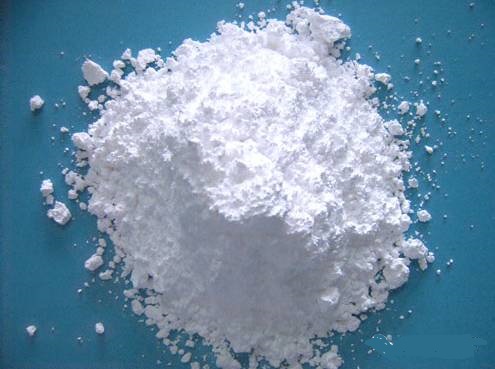Product name: Ultrafine antimony trioxide

Brand: zhonghuan
Origin: Shandong, China
Antimony trioxide content: 99.3%, 99.6%, 99.8%
Impurity content: <0.7%, <0.4%, <0.2%
Weight: 25KG/bag, 1000KG/pallet
The ultrafine antimony trioxide produced by the company, Zhonghuan brand, has a narrow particle size distribution range, generally in the range of 0.3-0.7 microns, with an average particle size of about 0.4 microns, a large surface area, and good flame retardant effect.
Currently, three grades of 99.3%, 99.6%, and 99.8% are produced, and the product quality is better than the national standard.
Basic information
Chinese name: Antimony trioxide
English name: Antimony (III) oxide 99.3 99.6 99.8
English alias: Einecs 215-474-6
CAS number: 1327-33-9
Molecular formula: O3Sb2
Molecular weight: 291.51800
Exact mass: 289.79200
Basic information
Chinese name: Antimony pentoxide
Chinese alias: Antimony (V) oxide, antimony anhydride [4]; Antimony (V) oxide [4]; Antimony pentoxide [4];
English name: Diantimony pentoxide
Diantimony Pentoxide;
CAS number: 1314-60-9
Molecular formula: O5Sb2
Molecular weight: 323.51700
Exact mass: 321.78200
PSA: 77.51000
Physical and chemical properties
Antimony trioxide is a white cubic crystal; melting point 656°C, relative density 5.2; amphoteric, stronger than acid; easily soluble in acid; solubility in water is 0.002 g/100 ml water. Antimony trioxide turns yellow when heated to 300-400°C in air, and antimony (III) antimonate (SbIII(SbVO4)) is obtained, with a relative density of 5.82. When strongly heated, it releases oxygen to become antimony trioxide. Antimony trioxide and strong alkali are melted to obtain M2SbIII(SbIIIO4) type salt (M is a monovalent metal). Sb2O3 vapor molecules are dimers Sb4O6, which begin to dissociate into Sb2O3 above 800°C and almost completely dissociate at 1800°C.
Antimony pentoxide is a light yellow powder; it is insoluble in water and slightly soluble in alkali to form antimonate.
Performance index of antimony oxide
Performance index: antimony oxide
Refractive index: 2.09
Density: 5.6
Oil absorption: 11
Light fastness: Excellent
Thermal stability: >500°C
Toxicity: antimony oxide products are irritating
Color index: Pigment white, 11 CI 77052
Structure: antimony oxide has a cubic crystal structure.
Performance: Originally used to reduce the pulverization of anatase titanium dioxide, the pigment is inert and has poor light transmittance.
Overview of the hazards of antimony trioxide
Overview of emergency: Harmful if swallowed. Harmful if inhaled.
GHS hazard category:
Acute oral toxicity Category 4
Acute inhalation toxicity Category 4
Hazard to the aquatic environment - long-term hazard Category 2
Signal word: Warning
Hazard statement:
H302 Harmful if swallowed.
H332 Harmful if inhaled.
H411 Toxic to aquatic life with long lasting effects.
Precautionary Statements:
Prevention:
P264 Wash thoroughly after handling.
P270 Do not eat, drink or smoke when using this product.
P261 Avoid breathing dust/fume/gas/mist/vapours/spray.
P271 Use only outdoors or in a well-ventilated area.
P273 Avoid release to the environment.
Incident Response:
P301+P312 IF SWALLOWED: Call a POISON CENTER/doctor if you feel unwell
P330 Rinse mouth.
P304+P340 IF INHALED: Remove person to fresh air and keep comfortable for breathing.
P312 Call a POISON CENTER/doctor if you feel unwell
P391 Collect spillage.
Disposal: P501 Dispose of contents/container in accordance with local regulations.
Health hazards: Harmful if swallowed. Harmful if inhaled.
Environmental hazards: Toxic to aquatic life and has long-lasting effects.
Uses of antimony trioxide
Because it is a heavy gas, Sb2O3 can extinguish flames. Mainly used in fire-retardant coatings. Antimony trioxide is a white pigment used in paint and other industries, and can be used to prepare various antimonides. As a flame retardant, it can be widely used in polyethylene, polypropylene, polystyrene, polyvinyl chloride, nylon, engineering plastics (ABS), rubber, paint, coating, synthetic resin, paper and other materials. As a defoamer, it is used to remove bubbles in melted glass and as a catalyst in polyester fibers. It is used as a covering agent and whitening agent in enamel and ceramic products. It is used as a passivating agent in heavy oil, residual oil, catalytic cracking, and catalytic reforming processes in petroleum.
